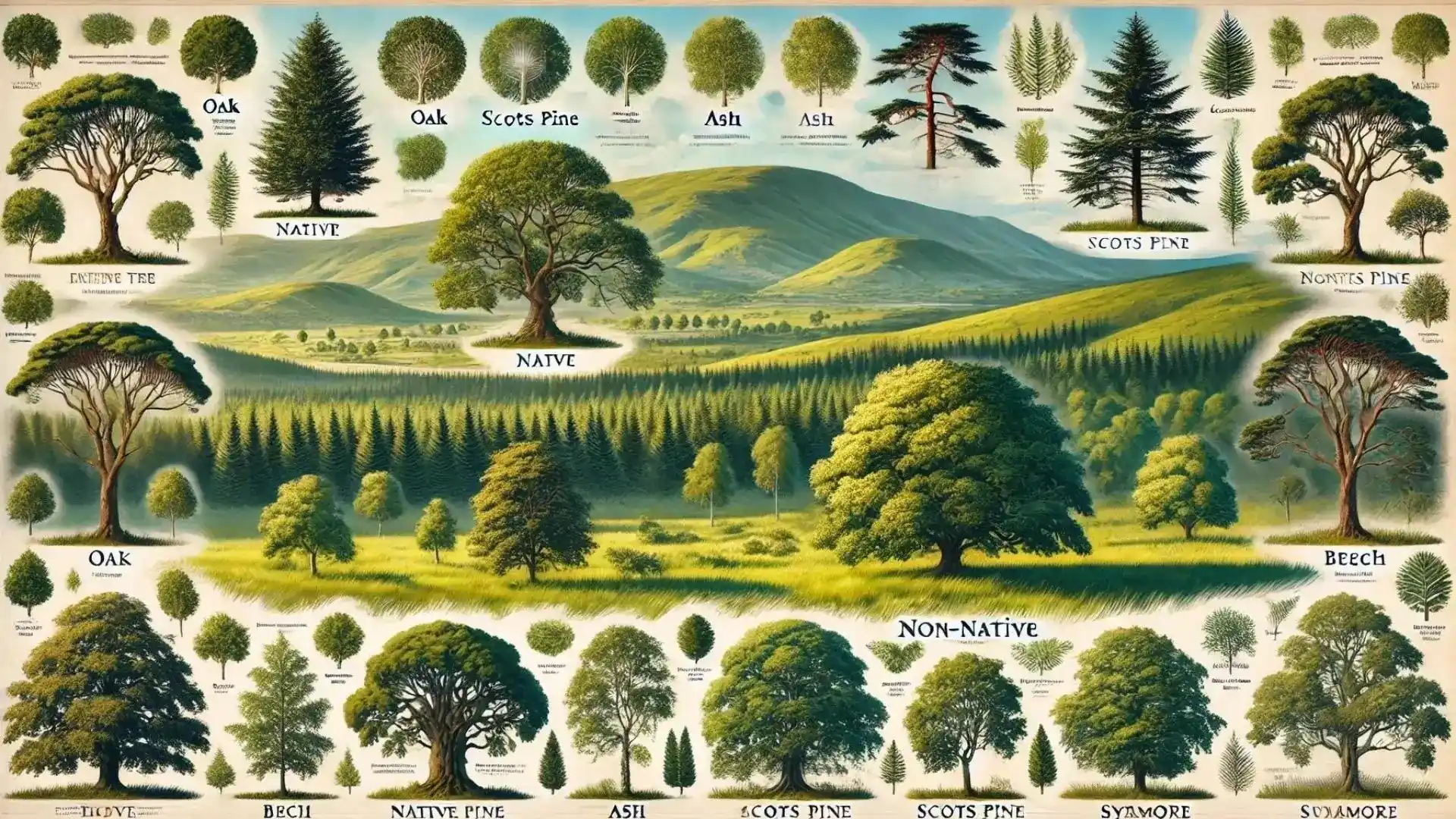
The types of trees in Ireland include common, native, and non-native species, each contributing to the country’s rich and diverse landscape. Native trees like oak, ash, and yew have long thrived in Ireland’s temperate climate, shaping its natural environment. Meanwhile, common trees such as beech and sycamore, though not originally from Ireland, have become widely established across the country.
Additionally, non-native trees like eucalyptus and Sitka spruce have been introduced for commercial and ornamental purposes, adding variety to Ireland’s woodlands and forests. These different types of trees form an important part of Ireland’s ecosystem and heritage.
| Tree Type | Description |
|---|---|
| Oak | The native Irish oak (Quercus robur) is one of the most iconic trees in Ireland, known for its strength and long life. It can grow up to 40 meters in height. |
| Ash | Ash trees are common in Ireland and are known for their light-colored wood, often used for hurling sticks. The tree can grow up to 35 meters tall. |
| Scots Pine | Scots Pine is a native evergreen tree that was reintroduced to Ireland. It is known for its tall, straight trunk and can grow up to 35 meters. |
| Birch | Birch trees, with their distinctive white bark, are fast-growing and can reach up to 25 meters. They are commonly found in Irish forests. |
| Yew | The yew tree is a slow-growing evergreen, often associated with churchyards in Ireland. It can live for thousands of years and reach 20 meters. |
| Holly | Holly is a native evergreen tree with glossy, spiny leaves and red berries. It is commonly associated with Irish folklore and grows up to 15 meters. |
| Alder | Alder trees thrive in wet areas such as riverbanks and lakesides. They are native to Ireland and can grow up to 25 meters in height. |
| Willow | Willows are typically found in moist soils, such as near rivers and lakes. They grow rapidly and can reach up to 20 meters. |
| Rowan (Mountain Ash) | Rowan is a native Irish tree, often associated with folklore. It produces bright red berries and grows up to 15 meters. |
| Hazel | Hazel trees are common in Ireland and are known for producing edible hazelnuts. The tree grows to about 6-10 meters in height. |
What are the Most Common Trees in Ireland?
Most common trees in Ireland are Oak (Quercus), Scots Pine (Pinus sylvestris), Ash (Fraxinus excelsior), and Birch (Betula). Each of these species plays a crucial role in the Irish landscape, supporting diverse ecosystems and providing essential benefits like habitat, shade, and aesthetic value. In the following sections, we'll explore each of these tree types in detail, highlighting their unique characteristics and importance to Ireland's natural heritage.
Oak (Quercus)
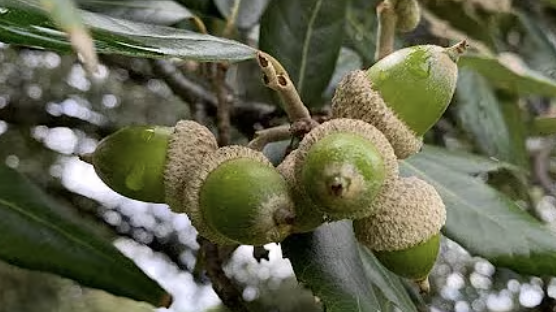
One of the most common trees in Ireland is the Oak, scientifically known as Quercus. This deciduous tree is deeply rooted in Irish history and culture, symbolizing strength and endurance. Oaks are particularly noted for their longevity and majestic stature, making them a prominent feature in both rural and urban landscapes across Ireland.
-
The Irish Oak, Quercus petraea, thrives in the moist, mild climate of Ireland, growing predominantly in the woodlands.
-
Oak trees support a diverse ecosystem, providing habitat and food for numerous wildlife species, including birds, insects, and mammals.
-
Characterized by their robust trunks and broad leaves, oaks are also valued for their durable wood, used in furniture and flooring.
Oaks are not only ecological powerhouses but also cultural symbols. They are often found in Irish folklore where they represent wisdom and strength. Preserving these trees is vital for maintaining biodiversity and the cultural heritage of Ireland, emphasizing the need for ongoing conservation efforts.
Scots Pine (Pinus sylvestris)
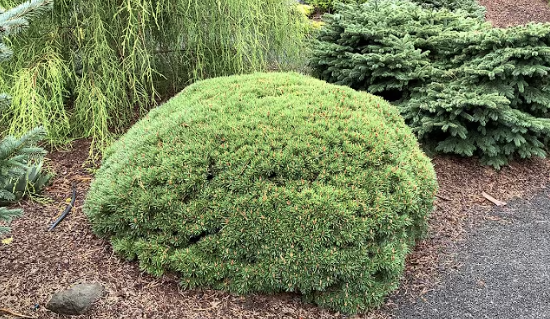
The Scots Pine (Pinus sylvestris) is among the most common native species in Ireland. This tree has adapted well to the Irish climate and landscape, thriving across various regions. It is particularly valued for its resilience and ability to grow in poor soil conditions, making it an essential part of Irish forestry.
-
The Scots Pine is identifiable by its distinctive orange-red bark and stiff, blue-green needles.
-
It typically grows to a height of 35 meters and can live for up to 700 years.
-
This species supports a wide range of wildlife, serving as a habitat for birds and a source of food for squirrels.
The importance of the Scots Pine in Ireland extends beyond its ecological benefits. It is also valued for timber production, contributing significantly to the local economy. The wood of the Scots Pine is prized for its strength and versatility, used in everything from construction to crafting furniture.
Ash (Fraxinus excelsior)
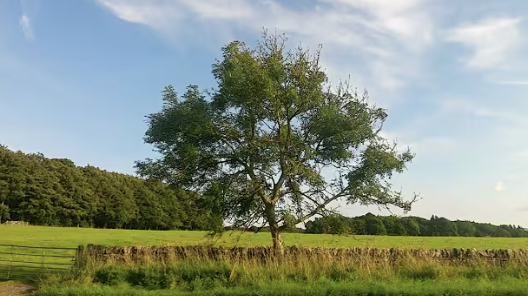
Ash trees (Fraxinus excelsior) are widespread throughout Ireland, playing an important role in the country’s natural environment. Valued for their strength and adaptability, they flourish in diverse habitats, from rural woodlands to urban spaces. These trees are particularly common in mixed forests and along roadsides, where they support a wide range of wildlife and help maintain ecological balance.
-
Ash trees can grow to impressive heights, often up to 35 meters.
-
Their leaves are compound, typically featuring 9-13 leaflets per leaf.
-
Younger Ash trees display smooth, pale grey bark, which becomes deeply fissured as they age.
-
During spring, these trees are among the first to bloom, producing clusters of purple flowers.
In Ireland, Ash trees are not only important ecologically but also culturally. They are widely used in the production of furniture and traditional Irish hurleys, thanks to the strength and flexibility of their wood. However, the spread of ash dieback disease has become a major concern, threatening this vital tree species within both managed and wild settings.
Birch (Betula)
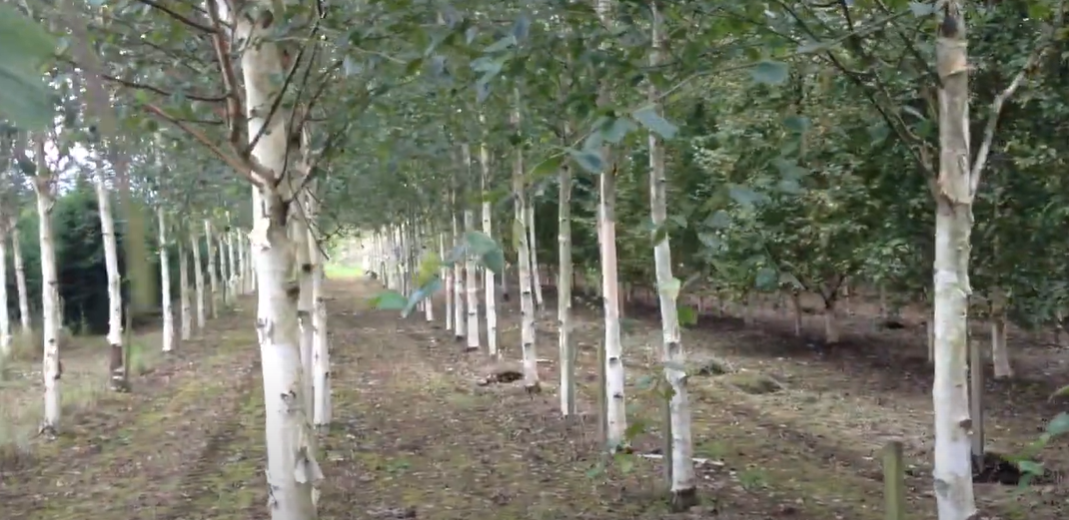
Birch trees are among the most common trees in Ireland. Recognizable by their distinctive silvery-white bark and slender trunks, they are a prominent feature in the Irish countryside. Thriving in the damp, cool Irish climate, Birches bring beauty and utility to the landscape.
-
Birches are fast-growing trees, often used in reforestation projects.
-
Their leaves turn a spectacular gold in the autumn, adding to the seasonal color.
-
The sap of the Birch tree can be tapped and used in traditional and commercial beverages.
-
Known for their resilience, Birch trees can quickly colonize open ground.
In the context of Irish flora, Birch trees not only enhance the scenic beauty but also support biodiversity. They serve as important ecological assets by fostering a habitat for various species of birds and insects. This widespread tree not only symbolizes the lushness of Ireland's natural environment but also plays a crucial role in sustaining it.
What are the Key Native Irish Trees?
The key native Irish trees include the common oak (Quercus robur), yew (Taxus baccata), Scots pine, and birch (Betula pendula and Betula pubescens), each playing an important role in the country’s natural ecosystem. These trees have thrived in Ireland's temperate climate since the last ice age, supporting local wildlife and contributing to the landscape's biodiversity.
Common oak trees, also known as quercus robur, are highly valued for their strength and longevity, while yew (Taxus baccata) and Scots pine provide unique habitats for various species. Native birch trees, including Betula pendula and Betula pubescens, add to the diversity of woodlands, offering beauty and ecological benefits with their characteristic white flowers. Together, these native trees form the backbone of Ireland’s rich and varied woodlands, also hosting other species like the common hawthorn (Crataegus monogyna), crab apple (Malus sylvestris), and prunus avium, enhancing the ecological tapestry.
Oak
The Irish oak, particularly the sessile oak, is a quintessential part of Irish woodlands. Known for its robust stature and longevity, the oak supports a myriad of wildlife and is often associated with strength and endurance in Irish mythology.
Ash
Ash trees are highly valued for their wood, flexibility, and the role they play in supporting biodiversity. They are commonly found in hedgerows and mixed woodland areas across Ireland, providing essential habitat for various species.
Scots Pine
Originally native to Ireland and reintroduced in modern forestry, the Scots pine is recognized for its tall, straight growth and is used extensively in both commercial forestry and for conservation purposes.
Hazel
The hazel tree is smaller but no less important, famed for its nuts that feed wildlife and its bendable wood used in traditional crafts. Hazel groves are often found in understorey layers of larger forests, contributing to the ecological diversity.
Birch
The silver birch and downy birch are both native to Ireland, admired for their distinctive bark and graceful appearance. These trees are pioneering species that quickly colonize open ground and improve soil fertility for future species.
Holly
Evergreen holly is emblematic, especially around Christmas, and is important for providing winter shelter and berries for birds. Holly trees are a common sight in both the understorey of forests and in hedgerows across the countryside.
Why are Native Trees Important in Ireland?
Native trees in Ireland, including species like Ulmus glabra, play a critical role in maintaining ecological balance. These trees, adapted to the Irish climate and soil since the ice age, support local wildlife by providing food and habitat. They contribute to the stabilization of the soil, preventing erosion. Native species also enhance air quality and sequester carbon, combating climate change. Importantly, they preserve the unique Irish landscape and biodiversity, fostering a connection between the land and its history.
What are the Main Non-Native Irish Trees?
The main non-native Irish trees include species such as beech, sycamore, Sitka spruce, and eucalyptus, which have been introduced to Ireland over the centuries. These trees have become a common sight in the Irish landscape, often planted for commercial forestry, ornamental purposes, or to enhance biodiversity.
Beech and sycamore trees, though not originally from Ireland, have integrated well into the local environment and are frequently found in parks and woodlands. Sitka spruce and eucalyptus are widely used in forestry due to their rapid growth and adaptability, contributing significantly to Ireland’s timber industry.
-
Sycamore (Acer pseudoplatanus): Widely planted for its tolerance to wind and coastal exposure.
-
Beech (Fagus sylvatica): Valued for its aesthetic appeal and often used in landscaping.
-
Horse Chestnut (Aesculus hippocastanum): Popular in parks and large gardens for its impressive spring flowers.
-
Norway Spruce (Picea abies): A major forestry tree used primarily for timber and Christmas trees.
-
Sitka Spruce (Picea sitchensis): The most extensively planted forestry tree in Ireland, known for its fast growth and hardiness.
These trees contribute to the diversity of Ireland's arboreal landscape but also raise concerns about the displacement of native species and changes in habitat structures. Effective management and conservation strategies are crucial to maintaining a balanced ecosystem that supports both native and non-native tree species.
What is the Importance of Trees in Irish Culture
The importance of trees in Irish culture is deeply rooted in the country’s history, mythology, and traditions. Trees, such as the oak, yew, and ash, have long been regarded as symbols of strength, wisdom, and protection. In ancient Ireland, trees were considered sacred, often associated with the gods and believed to possess spiritual qualities. The Tree of Life or Crann Bethadh is a prominent symbol in Irish mythology, representing harmony, growth, and the connection between earth and the heavens.
Trees also played a crucial role in Irish law and society. The Brehon Laws, one of Ireland’s oldest legal systems, classified trees into different categories based on their significance, with severe penalties for damaging important trees. Beyond their spiritual and legal importance, trees continue to be celebrated in modern Irish culture, featuring prominently in art, literature, and festivals.
Today, Ireland’s reverence for trees is also reflected in environmental efforts, with tree planting initiatives and conservation projects aiming to preserve native species and protect Ireland’s natural heritage. Trees remain a powerful symbol of Ireland’s connection to the land, culture, and history.
FAQs On Types of Trees in Ireland
1. What are the common types of trees in Ireland?
Common trees in Ireland include the Sessile Oak, Scots Pine, and Ash. These trees are integral to the Irish landscape.
2. Which trees are native to Ireland?
Native Irish trees include the Irish Yew, Downy Birch, and Hawthorn. These species have a long-standing presence in Ireland.
3. What non-native trees can be found in Ireland?
In Ireland, non-native trees like the Sitka Spruce and Horse Chestnut are common, having been introduced from other regions.
4. Are there any endangered tree species in Ireland?
The Killarney Strawberry Tree is among the endangered native species in Ireland, facing threats from habitat loss and disease.
5. How are Irish trees impacted by climate change?
Climate change affects Irish trees by altering growth patterns and increasing vulnerability to pests and diseases, which can lead to shifts in local ecosystems.
